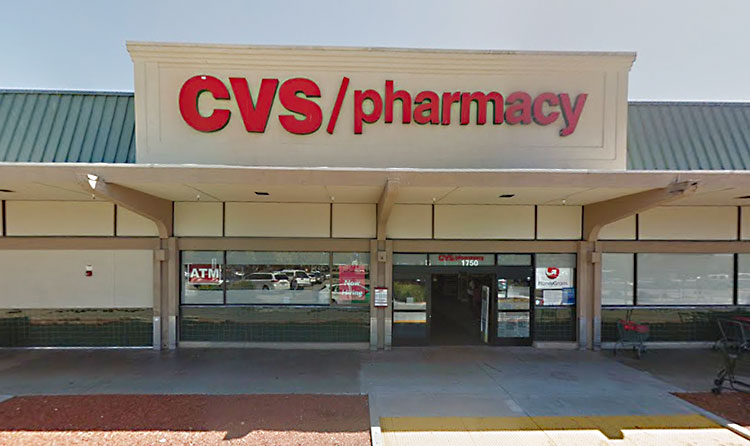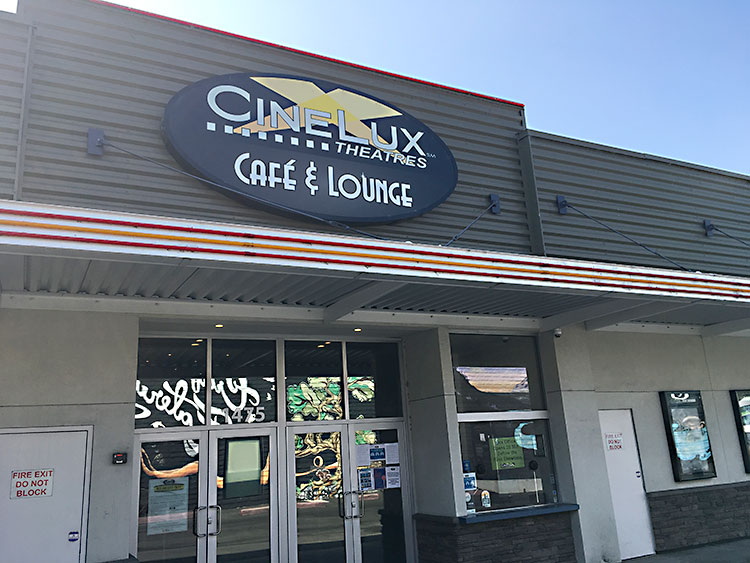By Jondi Gumz
On Sept. 8, Santa Cruz County moved from the Purple Tier to the Red Tier of the state’s COVID-19 monitoring system, allowing movie theaters to open at 25 percent capacity after being shut for nearly six months to prevent spread of the contagious coronavirus.
 A day later, Regal opened its Cinema 9 in Santa Cruz, and local chain Cinelux opened Friday in Capitola and Scotts Valley.
A day later, Regal opened its Cinema 9 in Santa Cruz, and local chain Cinelux opened Friday in Capitola and Scotts Valley.
The Red Tier allows indoor operations at restaurants, museums, places of worship and wedding ceremonies, at 25 percent capacity or 100 people, whichever is fewer; for gyms and fitness centers, yoga studios, dance studios, the limit is 10 percent capacity. For a month, they were restricted to outdoor operations.
Most counties, however, have widespread COVID infections and are in the Purple Tier, which mandates indoor operations. That prompted a lawsuit Tuesday by the California Fitness Alliance, which contends the state’s new rules restricting access to indoor exercise are not supported by data.
On Wednesday, Santa Cruz County reported the eighth COVID-19 death of a county resident, a Hispanic man in his early 40s in South County who died at home.
He had underlying health conditions, but COVID-19 was the primary cause of death, according to Corinne Hyland, Santa Cruz County Public Health Division. Health staff are tracing his contacts to find out how he acquired the infection.
“The Public Health Division extends its deepest sympathy to the individual’s family and friends,” Hyland said.
The county had reported an eighth fatality earlier, but has since learned that individual was a resident of Mexico, and thus will not be included in the county statistics, Hyland said.
Hyland noted a slight uptick in hospitalizations while the number of cases is leveling off or declining, which she said could be due to the CZU fire, which forced evacuation of San Lorenzo Valley, Scotts Valley, Bonny Doon and UC Santa Cruz, which had been doing COVID-19 testing.
As of Wednesday, Santa Cruz County had 2,108 cases, including 230 active cases, with 19 people hospitalized, including two in intensive care.
In Santa Cruz County, the case rate per 100,000 population is 5.5 percent, and the test positivity rate is 3.6 percent.
The case rate would have to fall to 3.9 percent and the positivity rate to 4.9 percent and to move into the Orange Tier with fewer restrictions. For example, schools can only offer distance learning, not classes in person. Bars, breweries, card rooms and live theaters remain closed; mini-golf, batting cages, bounce centers and laser tag are only allowed outdoors.
The state will review the COVID data again on Sept. 21.
Hyland also noted a disproportionate number of COVID-19 cases — 62 percent — in South County, as well as in the Latinx community — 63 percent.
Those with symptoms are encouraged to call their health care provider for testing or make an appointment, online or by phone, at the Optum Serve testing site at Ramsay Park in Watsonville, which is open Wednesday through Sunday 7 a.m.–7 p.m. Visit https://lhi.care/covidtesting or call 888-634-1123.
 CVS has begun to offer no-cost drive-through COVID-19 testing at its pharmacy at 1750 41st Ave., Capitola.
CVS has begun to offer no-cost drive-through COVID-19 testing at its pharmacy at 1750 41st Ave., Capitola.
“Wonderful!” said Hyland.
The testing is for active infections, no referral needed, and results are available in 2 to 3 days.
The individual being tested must bring their insurance card and be willing to swab their own nasal passage or bring someone to tackle that task. Appointments must be made online at cvs.com, click on Minute Clinic, and answer the questions to see if you are eligible.
For a county in the Red Tier, the state allows libraries to reopen at 50 percent capacity but the Santa Cruz Public Libraries has been dealing with the CZU lightning fires, which prevented access to the Felton and Scotts Valley branches for weeks but spared the Boulder Creek branch.
St. Abraham’s Classical Christian Academy in Aptos and Baymonte Christian School in Scotts Valley, both small private schools, have opened for in-person instruction, following mandated guidelines.
Health officials are fearful of another surge in COVID-19 cases, due to the fire evacuations that resulted in many people mixing with others from outside their household. Some 125 single-family homes burned.
Two studies have linked air pollution to higher COVID-19 fatality rates.
One study at Aarhus University in Denmark, investigated why the mortality rate is up to 12% in the northern part of Italy compared to 4.5% in the southern regions, and found people in northern Italy live with a higher level of air pollution.
Researchers at Harvard’s T.H. Chan School of Public Health found that an increase of one microgram of fine particulates per cubic meter (a metric of air pollution metric) was associated with a 15% increase in COVID-19 death rate.
•••
For information on the California COVID-19 monitoring system, visit covid19.ca.gov/safer-economy/.
For local information on COVID-19, go to www.santacruzhealth.org/coronavirus, call (831) 454-4242 between 8 a.m. and 5 p.m. Monday through Friday or 2-1-1.

